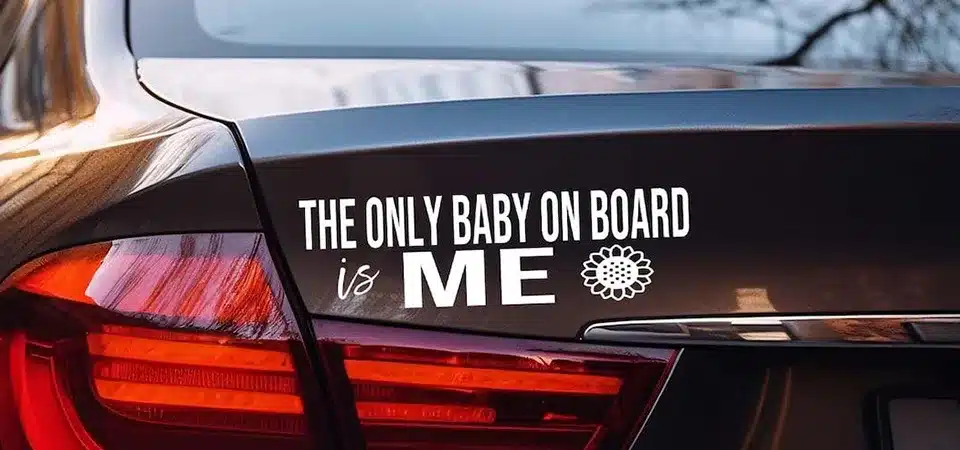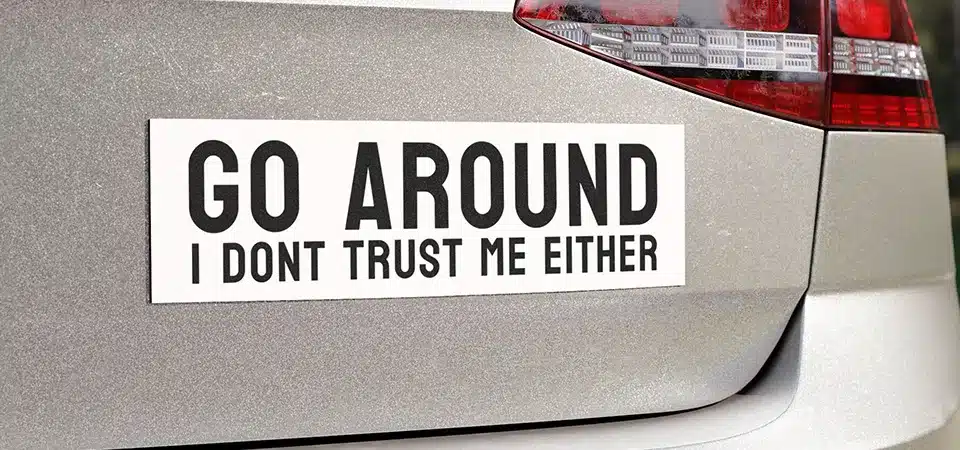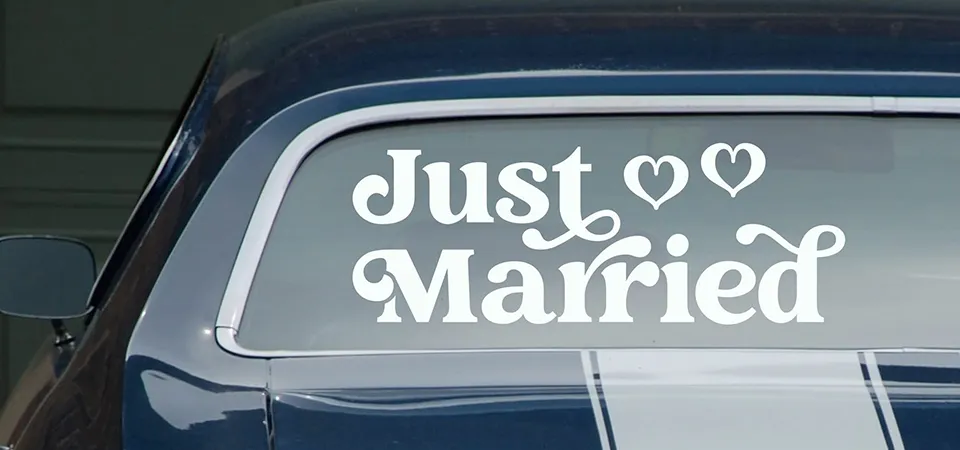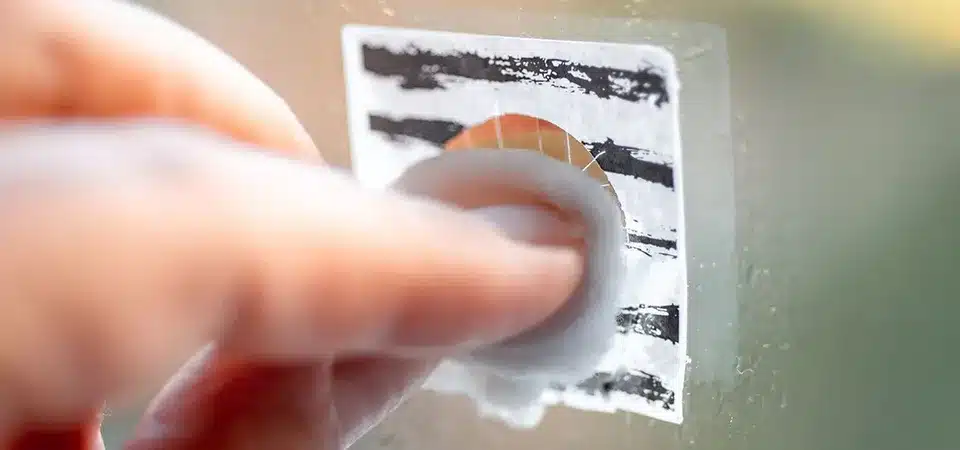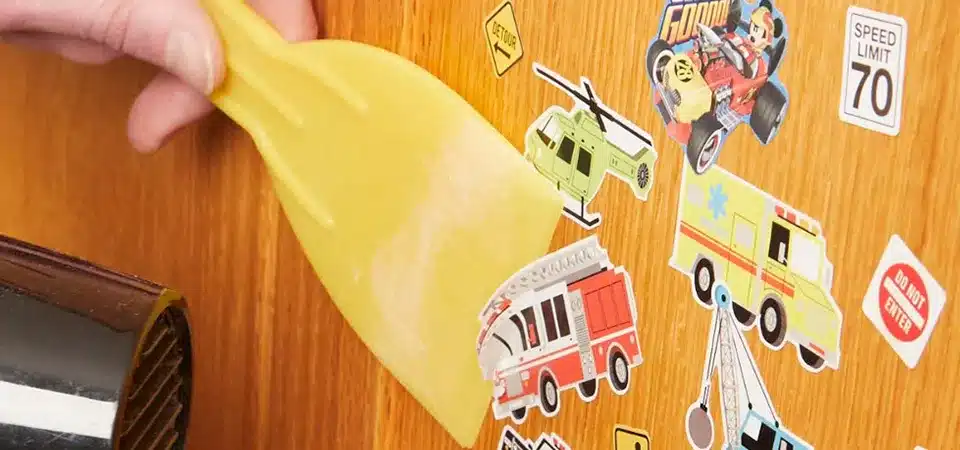You want to brand your car, but the words "sticker" and "decal" are confusing. Choose the wrong one, and you could get a cheap look or waste money on something that won't last.
Car stickers are printed on a single piece of vinyl, often with a background, and are easy to apply. Car decals are cut from vinyl, transferring only the design (like letters) using transfer tape for a cleaner, "painted-on" look that lasts longer outdoors.
In my sticker printing business, I see this confusion all the time. A client will ask for a "car sticker" when what they really need for their business fleet is a "car decal." Or they'll ask for a decal for a simple, fun bumper giveaway, where a sticker would be much better and more affordable. The difference isn't just a fancy name; it's about how they are made, how they are applied, and what job they are best suited for. Let's break it down so you know exactly what you need for your vehicle.
What are the features of car stickers and decals?
You want your vehicle graphics to look professional and last a long time. But how do you know if a sticker or a decal has the right features for your specific need?
Car stickers are best for vibrant, full-color images on a single sheet, making them quick and affordable. Car decals excel at single-color, clean-cut designs like text or logos, offering superior durability and a more professional, built-in appearance without any background.
The best way to understand the features is to look at how each one is constructed. In my shop, when an order comes in for a vehicle graphic, the first thing I determine is whether we need to print something or just cut it. This single decision changes everything.
Car Sticker Features
A car sticker is essentially a printed graphic on a sheet of adhesive vinyl.
- Appearance: They are fantastic for complex, multi-color images like a photograph or a logo with gradients and lots of detail. The design is printed directly onto the surface of the white or clear vinyl.
- Material: It's a single layer of printed vinyl on a peel-away backing paper. The entire shape you peel off—whether it's a circle, a square, or a custom shape—is the sticker itself, including any clear or white background area around the design.
- Application: Application is very simple. You just peel it from the backing and stick it on the car.
- Best Use: I recommend stickers for full-color bumper stickers, promotional giveaways for events, or temporary branding. They are cost-effective and easy for anyone to apply on the spot.
Car Decal Features
A car decal is cut, not printed.
- Appearance: This is where decals shine. They provide a very clean, professional look because there is no background. If your design is just letters and a simple logo, only the shape of those letters and logo will be left on your car. It looks as if the design was painted on professionally.
- Material: Decals are cut from a solid-colored sheet of durable vinyl. They consist of three layers: the backing paper, the cut vinyl itself, and a top layer of transfer tape that holds all the separate pieces together.
- Application: It's a more involved process. You use the transfer tape to lift the design, position it, and then rub it onto the car surface before peeling the transfer tape away.
- Best Use: This is the standard for long-term business branding. Think of the company name and phone number on the side of a work van, or a clean logo on the rear window. They are more durable and weather-resistant.
Why do people use the term decals?
The word "decal" sounds a bit more official and complicated. Is it just a fancy word for a sticker, or does it actually mean something specific and important?
People use "decal" to describe a graphic that is transferred from one surface to another. The term comes from "decalcomania," a transferring process. It specifically highlights that only the design itself moves to the final surface, unlike a typical sticker.
The history of the word actually helps clarify its modern meaning. It's not just industry jargon; it describes the function of the product perfectly and helps manage expectations for my clients.
The Origin of "Decal"
The word "decal" is a shortened version of "decalcomania." This was an art technique that became popular in the 18th century for transferring engravings and prints onto surfaces like pottery or glass. The key part of the process was always the transfer of the image from a temporary paper to a permanent object. When modern vinyl cutting technology was developed, the term "decal" was a perfect fit. It describes a product where the design is held on a temporary sheet (the transfer tape) just long enough to move it to its final destination, like a car window.
When "Sticker" Doesn't Feel Right
In my business, language matters. If a contractor orders lettering for his entire fleet of trucks, calling it a bunch of "stickers" feels cheap and doesn't capture the quality of the product. It sounds like something a child would use. Calling it a "decal" immediately communicates a more professional, durable, and precisely cut graphic. It also prepares the customer for a different application process. When I tell a customer their decal is ready, they understand it's not just a peel-and-stick item; it's a higher-grade product that will require care to apply correctly for that clean, painted-on look.
Are stickers vs decals vs labels the same thing?
You're trying to order the right product, but now the word "label" is in the mix. Using the wrong term could leave you with a paper product that falls apart in the rain.
No, they are different, mainly because of their purpose. A sticker is primarily for decoration or promotion. A decal is a type of sticker that transfers a design. A label is functional; it provides key information.
As the owner of a business named Sticker Printing China, this is a question I answer every single day. We make all three, and while they all have adhesive, their jobs are very different. The easiest way I explain it to my customers is by focusing on the primary purpose of the product.
Purpose Defines the Product
Think about what you need the product to do. Is it for fun? Is it for branding? Or is it for information? This will tell you exactly what you need to order. You wouldn't use a paper shipping label as a bumper sticker, for example. Here’s a simple table I use to help clients choose the right product.
| Term | Primary Purpose | Common Material | Car Example |
|---|---|---|---|
| Sticker | Decoration, Promotion | Printed Vinyl | A colorful band sticker or "Baby on Board" sign. |
| Decal | Professional Branding | Cut Vinyl | Your business logo and phone number on the car door. |
| Label | Information | Paper, Polyester | The oil change reminder sticker inside your windshield. |
So, at the end of the day, while all three stick to things, their function is what separates them. A label's main job is to inform. A sticker's main job is to decorate. And a decal is a specific type of sticker used to achieve a clean, professional application for branding. For your car's exterior, you are always choosing between a sticker and a decal.
Conclusion
Use car stickers for quick, colorful, and budget-friendly graphics. Choose car decals for a clean, professional, and durable look for logos and lettering. Knowing the difference ensures you get the perfect result.

